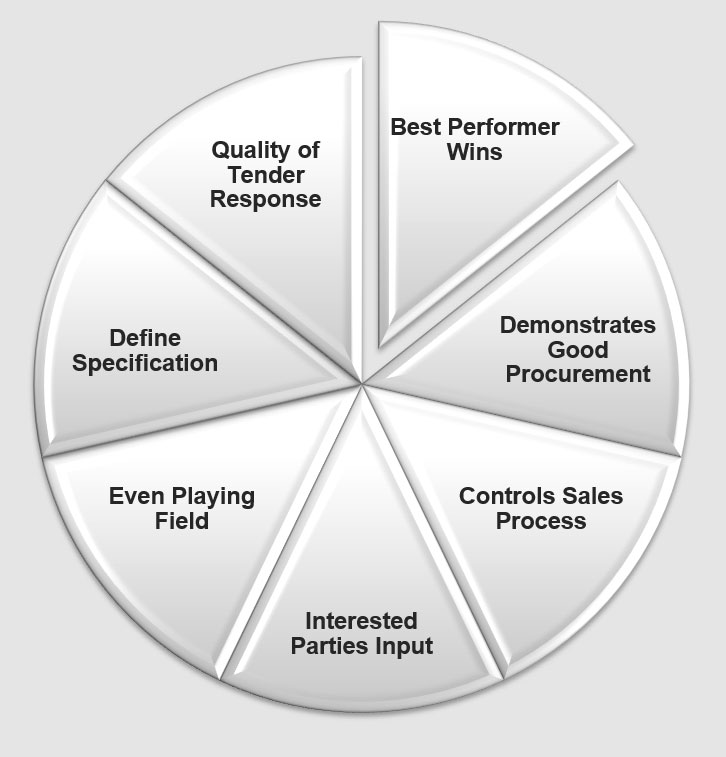Why Do Public Sector Organisations & Private Companies Tender Contracts?
The tendering process can be very frustrating. Sometimes, you may feel that companies use tenders just to annoy you! However, there are some simple reasons and it is very useful to understand why companies tender.
The previous post Tender Procurement Process explains the various steps that form a typical tender. It helps put the following points into perspective.

Best Performer Wins
Tendering involves a competition where several potential suppliers compete against a set of criteria including:
- Specification or requirement
- Quality
- Price
These are measured so the best scoring bidder(s) wins the contract.
Demonstrates Good Procurement
Procurement can prove that everything was done fairly and correctly with the right decision taken. Thus, ensuring the selecting of the best performer(s).
Controls the Sales Process
Having a tender at an agreed time helps the customer to manage the sales process:
- The purchase can be made when required i.e. to a schedule
- It limits number of sellers involved
- Unwanted sales calls can be instructed to wait until the tender comes out
Allows Input from all Interested Parties
The specification or general requirement can be agreed by all those who want to be involved eg:
- Board
- Budget holder
- Service user
- Procurement (buyer)
- HR / Quality / H&S
They can also be involved in the tendering process and supplier selection.
TIP: It is very useful to know exactly who is involved. If possible, try to consider all the decision-makers’ views and requirements when submitting your bid. For example, if you know that the MD has specific worries about the current service, demonstrate how your solution will help alleviate those concerns.
Even Playing Field
Because everyone is bidding on the same tender, it should ensure that the opportunity is fair and even to all those invited to tender. This supports “Best Performer Wins” and “Demonstrates Good Procurement”.
Quality of Tender Response
The invitation to tender provides information of the company’s needs. This greatly improves the quality of the tender response when compared to ad-hoc briefings where each individual supplier could provide an entirely different offer.
- Ease of evaluations
- same format for all tender submissions
- same package to score
- can ‘compare apples with apples’
- Right information first time
Can Define Specification
The company might have a clear idea of what it wants and how it should be done. Alternatively it might know what it needs to achieve but not necessarily how to do it. There are two types of specifications:
- Input specification – this sets out ‘how to do it’ e.g. use Dulux Trade paint
- Output specification – this only asks for the ‘desired end result’ eg walls painted to last for 3 years
TIP: Input specs are very limiting as there is little scope for innovation or improvement. Output specs are open therefore allowing the bidder to show what makes them different.
If you want help with winning bids and tenders, contact us for an informal chat about our tender consultancy services.
Summary
Once you understand why public sector and private companies tender their contracts, it makes dealing with tenders a little easier. Appreciating what is trying to be achieved and who is involved will boost your chances of winning tenders.
Please do add your thoughts in the comments box.


Was really helpful
Best regards
Luan
Really helped.
Regards
Margaret
Public tenders are for large companies who:
a) are able to employ a full-time proposal writer with the talent and experience needed to write a winning proposal.
b) are large enough to offer redundant talent
Everyone else is wasting their time.
Understandable sentiment – public sector tenders can be tricky: Public Sector Bidding
But you’ll see that the majority of our clients are SMEs and they do win public sector tenders.
Not saying it’s easy but it is definitely achievable. And our clients frequently beat large companies with bid teams.